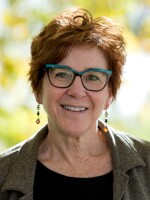Protesters took their demands for justice for teenager Michael Brown, shot and killed by a Ferguson police officer, to the St. Louis County courthouse today. That’s where a grand jury is examining evidence against Darren Wilson, at the behest of County Prosecutor Bob McCulloch.
Demonstrators asked, among other things, that Officer Wilson be charged in the shooting, instead of the case going to a grand jury. Former St. Louis prosecutor Jerryl Christmas led the first hour or so of the protest. Christmas told St. Louis Public Radio he knows first-hand that the grand jury process is rigged.

“You know the joke in the prosecutor's office. Everybody knows you can get a grand jury to indict a paper bag," Christmas said. "If I didn’t want a case indicted by the grand jury they wouldn't indict; if I did want it, they did. That’s how it works in the grand jury.”
Protesters are starting to call their actions a “movement.”
What are reportedly Michael Brown’s last words – “Don't shoot" – have become the mantra of demonstrators. (Story continues, below.)
Many feel his death is galvanizing a new era of the civil rights movement.
Mawuli Davis of Atlanta joined the march, representing the National Conference of Black Lawyers. Davis said his group has organized around Trayvon Martin and the Jena Six but this effort is overshadowing even those cases.
“The sustained presence of protesters and of organizers we have not, I have not, seen,” Davis said.
Davis said it’s important to document this protest as it takes its place in history.
One woman said she drove 10 hours from Minnesota to be involved in the demonstrations this week. She cited a personal reason.
“My friend was killed by a police officer in New York,” she said.
Counter Protester: ‘Police Have A Difficult Job’
Several protesters widened the scope of the demonstration.

Beatrice Thomas of Ferguson brought her two daughters to be part of the demonstration. Thomas said she was there for Brown and everyone who’s been killed by police. But she also came to protest economic inequality.
“For everyone who’s been mistreated out here in this economy, period, even for the ones who are out here looking for jobs,” Thomas said.
Hazel Wright from Jennings led the crowd in a chant encouraging voter registration.
“Voting has to be done because we have to change the establishment. Voting is our power,” Wright said.
Still the primary issue of the day remained Michael Brown. Many protesters carried signs reading “hands up don’t shoot” and “black lives matter.”

But one sign bore a different message. Patty Cantor said she walked over to the courthouse from her house, nearby, to carry a poster that read. “My friends and family support Officer Wilson and the police.” Her arrival prompted a new chant from the crowd of, “Hey, hey, ho, ho, the killer cops have got to go.”
But Cantor told the protesters to let the grand jury decide.
“I’m here because I think the police have a difficult job to do and until we know all the facts we need to not be out looting, hurting people and accusing people of things that we don’t know what happened yet,” Cantor said.
Police quickly escorted Cantor to a squad car but wouldn’t say why they removed her from the scene.
Follow Nancy Fowler on Twitter: @NancyFowlerSTL





